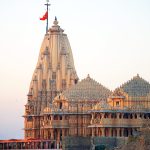The 12 Jyotirlingas pilgrimage guide is the ultimate roadmap for Shiva devotees who wish to explore the most sacred temples of Lord Shiva in India. The word Jyotirlinga means “radiance of the almighty Shiva.” According to Hindu scriptures, Lord Shiva appeared in these 12 shrines as a pillar of divine light to bless humanity. This guide covers the names, locations, significance, best time to visit, and travel tips for your Jyotirlinga yatra.
What Are Jyotirlingas?
A Jyotirlinga is considered a powerful manifestation of Lord Shiva, symbolizing his infinite nature. The Shiva Purana mentions that visiting all 12 Jyotirlingas destroys sins and grants moksha (liberation). For centuries, millions of devotees have undertaken this sacred pilgrimage across India.
Complete 12 Jyotirlingas Pilgrimage Guide with Locations
| Jyotirlinga | State | Special Significance |
|---|---|---|
| Somnath | Gujarat | The first Jyotirlinga, symbol of eternal faith |
| Mallikarjuna (Srisailam) | Andhra Pradesh | Represents unity of Shiva and Parvati |
| Mahakaleshwar | Madhya Pradesh | Only south-facing Jyotirlinga |
| Omkareshwar | Madhya Pradesh | Located on an island shaped like “Om” |
| Kedarnath | Uttarakhand | One of the Char Dham shrines in the Himalayas |
| Bhimashankar | Maharashtra | Source of River Bhima |
| Kashi Vishwanath | Uttar Pradesh | Sacred temple in Varanasi, city of Shiva |
| Trimbakeshwar | Maharashtra | Origin of River Godavari |
| Vaidyanath (Vaijnath) | Jharkhand | Known for healing powers |
| Nageshwar | Gujarat | Protector from poison and evil |
| Rameshwaram | Tamil Nadu | Connected with Lord Rama in Ramayana |
| Grishneshwar | Maharashtra | The last Jyotirlinga, near Ellora caves |
Spiritual Significance of Jyotirlinga Yatra
Each Jyotirlinga represents a unique aspect of Shiva’s cosmic power—destruction of evil, healing, creation, and protection. Devotees believe that visiting all 12 shrines is equivalent to achieving complete devotion (bhakti) and divine blessings.
Best Time for Jyotirlinga Yatra
-
General: Maha Shivratri and Shravan month (July–August).
-
North India (Kedarnath, Kashi Vishwanath): Summer to early winter (May–November).
-
South India (Rameshwaram, Mallikarjuna): Year-round.
-
West India (Somnath, Nageshwar): October–March for pleasant weather.
Suggested Pilgrimage Routes
To make your yatra easier, many pilgrims cover Jyotirlingas in clusters:
-
North Cluster: Kedarnath, Kashi Vishwanath.
-
West Cluster: Somnath, Nageshwar, Bhimashankar, Trimbakeshwar, Grishneshwar.
-
Central Cluster: Mahakaleshwar, Omkareshwar.
-
South Cluster: Mallikarjuna, Rameshwaram.
Travel Tips for Devotees
-
Plan your journey in advance and group temples by region.
-
Book accommodation early during Shravan and Shivratri.
-
Carry light luggage, ID proof, and essential medicines.
-
Respect temple customs: dress modestly, avoid photography inside sanctum.
-
Hire local guides where needed to understand temple legends.




